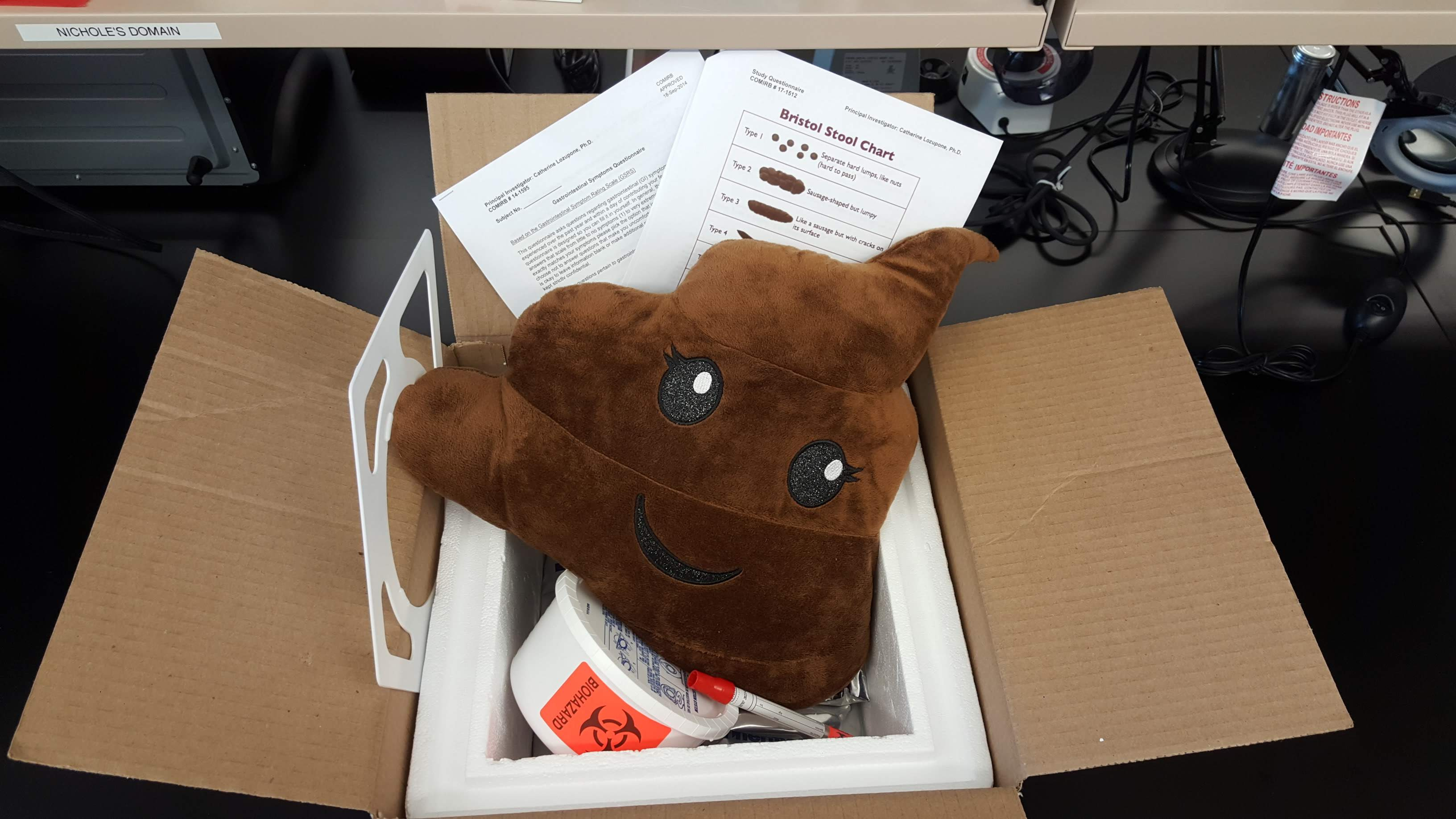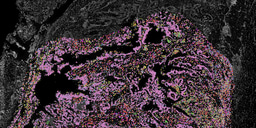Microbiomes in HIV and at-risk populations - an evolving mystery
Published in Microbiology

Healthy adult gut microbiomes can be stratified into groups defined largely by the relative dominance of bacteria in the genus Prevotella versus Bacteroides. In general, Bacteroides-rich microbiomes are more common in people eating a typical western diet – high fat and low fiber – whereas relatively Prevotella-rich microbiomes are observed in agrarian cultures and in individuals in the US who consume less animal product and more carbohydrates and fiber and has been generally seen as healthy.
However, potential negative health implications for Prevotella-rich microbiomes have been discussed in several health contexts including insulin resistance and rheumatoid arthritis. Prevotella richness has also been described in several initial microbiome studies of Americans with HIV infection. Understanding context-specific differences in Prevotella-rich microbiomes may help deconvolute how it associates with diet and impacts disease.

When initiating a new HIV microbiome study we decided to recruit our non-disease controls from people who were more similar to those living with HIV, this meant primarily men who have sex with men (MSM), a population disproportionately affected by HIV in the US. Much to our surprise, the gut microbiome of our MSM, HIV negative controls no longer showed strong differences from HIV positive people, suggesting Prevotella richness might be associated with MSM and not HIV. Our suspicions were quickly confirmed when another group based in Spain published a similar result.
Given these surprising findings we had two main questions we wanted to answer: 1) Is the microbiome composition in Prevotella-rich MSM differed from Prevotella-rich non-MSM? 2) Are there still HIV-specific changes despite the large MSM confounder? In short, the answer to both is ‘yes’!
In our study we showed that Prevotella-rich microbiomes in MSM had a different species composition than Prevotella-rich microbiomes in non-MSM. Many of these MSM-associated microbes are often implicated in inflamed guts and other diseases. We’ve confirmed this with other studies in our lab that showed MSM microbiomes and some of the associated microbes were more inflammatory (Neff et al. 2018, Lozupone et al. 2014). Taken together, this suggests that there may be a disease-type and a healthy, diet-type Prevotella-rich microbiome.

This marked MSM microbiome difference also led us to the question ‘why are these different?’. Unfortunately, we still do not know what drives a Prevotella-rich microbiome in MSM. We had suspected that sexual practices may be a factor, but found no evidence for this in our data.
Additionally, although the microbiome differences between HIV positive and HIV negative MSM were relatively subtle, the differences that we do show are an increase bacteria sometimes found in opportunistic infections. In our other work we have found these microbiomes to induce high inflammation in mouse studies, indicating that these subtle differences may be functionally significant (Neff et al. 2018).
All in all, we still have much to learn about the MSM and HIV-associated gut microbiome and its health implications, as well as the functional properties of Prevotella-rich microbiomes observed in health versus disease contexts. The more we know about these potentially unhealthy microbiomes the more likely we might be to find treatments that focus on the microbiome to promote health in HIV infected and high-risk populations.
The paper in the journal Microbiome can be found here.
References
Armstrong AJS, Shaffer M, Nusbacher NM, Griesmer C, Fiorillo S, Schneider JM, Preston Neff C, Li SX, Fontenot AP, Campbell T, Palmer BE, Lozupone CA. 2018. An exploration of Prevotella-rich microbiomes in HIV and men who have sex with men. Microbiome 6:198.
Lozupone CA, Rhodes ME, Neff CP, Fontenot AP, Campbell TB, Palmer BE. 2014. HIV-induced alteration in gut microbiota. Gut Microbes 5:562-570.
Neff CP, Krueger O, Xiong K, Arif S, Nusbacher N, Schneider JM, Cunningham AW, Armstrong A, Li S, McCarter MD, Campbell TB, Lozupone CA, Palmer BE. 2018. Fecal Microbiota Composition Drives Immune Activation in HIV-infected Individuals. EBioMedicine 30:192-202.
Follow the Topic
-
Microbiome

This journal hopes to integrate researchers with common scientific objectives across a broad cross-section of sub-disciplines within microbial ecology. It covers studies of microbiomes colonizing humans, animals, plants or the environment, both built and natural or manipulated, as in agriculture.
Related Collections
With Collections, you can get published faster and increase your visibility.
Harnessing plant microbiomes to improve performance and mechanistic understanding
This is a Cross-Journal Collection with Microbiome, Environmental Microbiome, npj Science of Plants, and npj Biofilms and Microbiomes. Please click here to see the collection page for npj Science of Plants and npj Biofilms and Microbiomes.
Modern agriculture needs to sustainably increase crop productivity while preserving ecosystem health. As soil degradation, climate variability, and diminishing input efficiency continue to threaten agricultural outputs, there is a pressing need to enhance plant performance through ecologically-sound strategies. In this context, plant-associated microbiomes represent a powerful, yet underexploited, resource to improve plant vigor, nutrient acquisition, stress resilience, and overall productivity.
The plant microbiome—comprising bacteria, fungi, and other microorganisms inhabiting the rhizosphere, endosphere, and phyllosphere—plays a fundamental role in shaping plant physiology and development. Increasing evidence demonstrates that beneficial microbes mediate key processes such as nutrient solubilization and uptake, hormonal regulation, photosynthetic efficiency, and systemic resistance to (a)biotic stresses. However, to fully harness these capabilities, a mechanistic understanding of the molecular dialogues and functional traits underpinning plant-microbe interactions is essential.
Recent advances in multi-omics technologies, synthetic biology, and high-throughput functional screening have accelerated our ability to dissect these interactions at molecular, cellular, and system levels. Yet, significant challenges remain in translating these mechanistic insights into robust microbiome-based applications for agriculture. Core knowledge gaps include identifying microbial functions that are conserved across environments and hosts, understanding the signaling networks and metabolic exchanges between partners, and predicting microbiome assembly and stability under field conditions.
This Research Topic welcomes Original Research, Reviews, Perspectives, and Meta-analyses that delve into the functional and mechanistic basis of plant-microbiome interactions. We are particularly interested in contributions that integrate molecular microbiology, systems biology, plant physiology, and computational modeling to unravel the mechanisms by which microbial communities enhance plant performance and/or mechanisms employed by plant hosts to assemble beneficial microbiomes. Studies ranging from controlled experimental systems to applied field trials are encouraged, especially those aiming to bridge the gap between fundamental understanding and translational outcomes such as microbial consortia, engineered strains, or microbiome-informed management practices.
Ultimately, this collection aims to advance our ability to rationally design and apply microbiome-based strategies by deepening our mechanistic insight into how plants select beneficial microbiomes and in turn how microbes shape plant health and productivity.
This collection is open for submissions from all authors on the condition that the manuscript falls within both the scope of the collection and the journal it is submitted to.
All submissions in this collection undergo the relevant journal’s standard peer review process. Similarly, all manuscripts authored by a Guest Editor(s) will be handled by the Editor-in-Chief of the relevant journal. As an open access publication, participating journals levy an article processing fee (Microbiome, Environmental Microbiome). We recognize that many key stakeholders may not have access to such resources and are committed to supporting participation in this issue wherever resources are a barrier. For more information about what support may be available, please visit OA funding and support, or email OAfundingpolicy@springernature.com or the Editor-in-Chief of the journal where the article is being submitted.
Collection policies for Microbiome and Environmental Microbiome:
Please refer to this page. Please only submit to one journal, but note authors have the option to transfer to another participating journal following the editors’ recommendation.
Collection policies for npj Science of Plants and npj Biofilms and Microbiomes:
Please refer to npj's Collection policies page for full details.
Publishing Model: Open Access
Deadline: Jun 01, 2026
Microbiome and Reproductive Health
Microbiome is calling for submissions to our Collection on Microbiome and Reproductive Health.
Our understanding of the intricate relationship between the microbiome and reproductive health holds profound translational implications for fertility, pregnancy, and reproductive disorders. To truly advance this field, it is essential to move beyond descriptive and associative studies and focus on mechanistic research that uncovers the functional underpinnings of the host–microbiome interface. Such studies can reveal how microbial communities influence reproductive physiology, including hormonal regulation, immune responses, and overall reproductive health.
Recent advances have highlighted the role of specific bacterial populations in both male and female fertility, as well as their impact on pregnancy outcomes. For example, the vaginal microbiome has been linked to preterm birth, while emerging evidence suggests that gut microbiota may modulate reproductive hormone levels. These insights underscore the need for research that explores how and why these microbial influences occur.
Looking ahead, the potential for breakthroughs is immense. Mechanistic studies have the power to drive the development of microbiome-based therapies that address infertility, improve pregnancy outcomes, and reduce the risk of reproductive diseases. Incorporating microbiome analysis into reproductive health assessments could transform clinical practice and, by deepening our understanding of host–microbiome mechanisms, lay the groundwork for personalized medicine in gynecology and obstetrics.
We invite researchers to contribute to this Special Collection on Microbiome and Reproductive Health. Submissions should emphasize functional and mechanistic insights into the host–microbiome relationship. Topics of interest include, but are not limited to:
- Microbiome and infertility
- Vaginal microbiome and pregnancy outcomes
- Gut microbiota and reproductive hormones
- Microbial influences on menstrual health
- Live biotherapeutics and reproductive health interventions
- Microbiome alterations as drivers of reproductive disorders
- Environmental factors shaping the microbiome
- Intergenerational microbiome transmission
This Collection supports and amplifies research related to SDG 3, Good Health and Well-Being.
All submissions in this collection undergo the journal’s standard peer review process. As an open access publication, this journal levies an article processing fee (details here). We recognize that many key stakeholders may not have access to such resources and are committed to supporting participation in this issue wherever resources are a barrier. For more information about what support may be available, please visit OA funding and support, or email OAfundingpolicy@springernature.com or the Editor-in-Chief.
Publishing Model: Open Access
Deadline: Jun 16, 2026




Please sign in or register for FREE
If you are a registered user on Research Communities by Springer Nature, please sign in